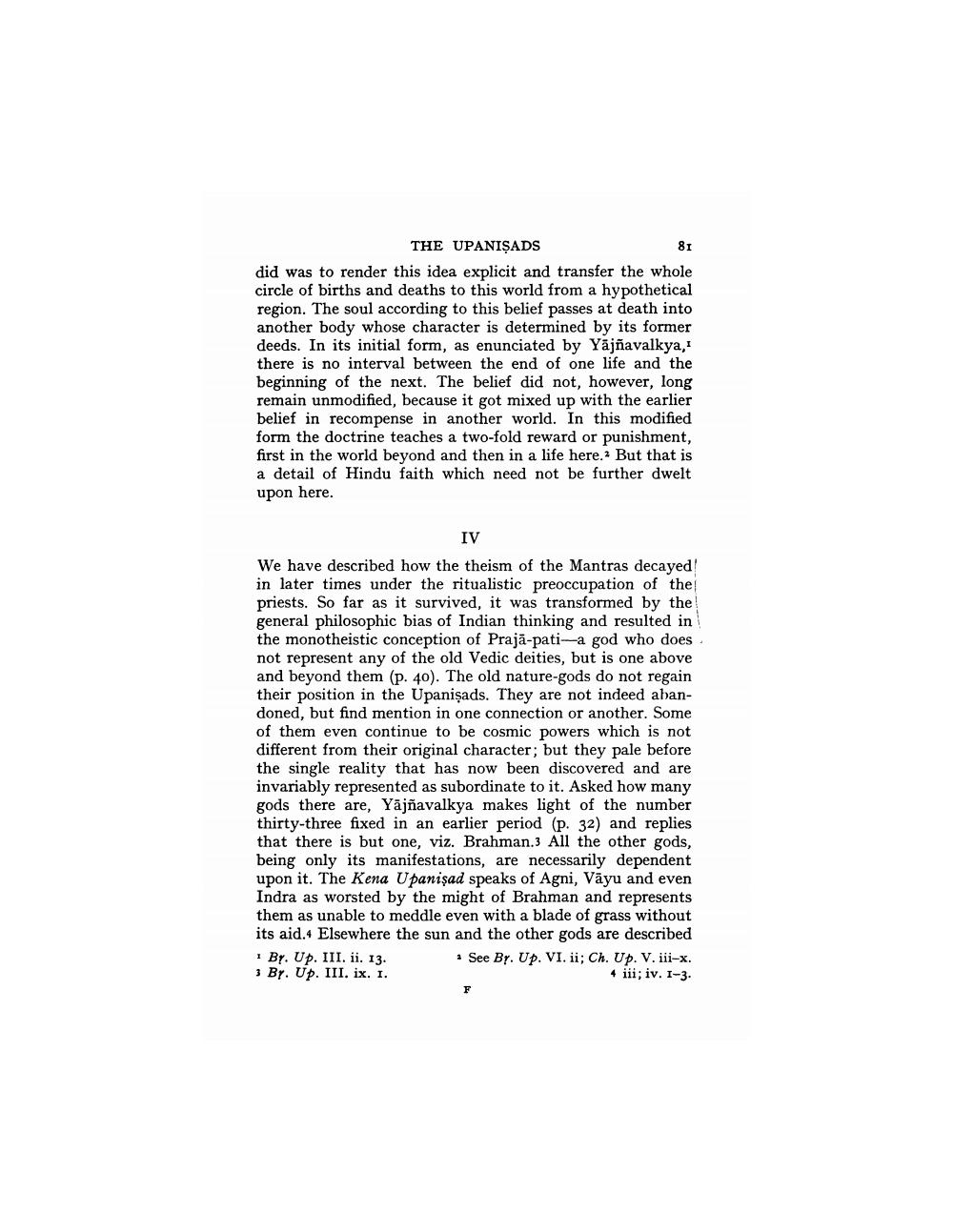________________
THE UPANIŞADS did was to render this idea explicit and transfer the whole circle of births and deaths to this world from a hypothetical region. The soul according to this belief passes at death into another body whose character is determined by its former deeds. In its initial form, as enunciated by Yājñavalkya, there is no interval between the end of one life and the beginning of the next. The belief did not, however, long remain unmodified, because it got mixed up with the earlier belief in recompense in another world. In this modified form the doctrine teaches a two-fold reward or punishment, first in the world beyond and then in a life here. But that is a detail of Hindu faith which need not be further dwelt upon here.
IV
We have described how the theism of the Mantras decayed in later times under the ritualistic preoccupation of the priests. So far as it survived, it was transformed by the general philosophic bias of Indian thinking and resulted in the monotheistic conception of Prajā-pati-a god who does not represent any of the old Vedic deities, but is one above and beyond them (p. 40). The old nature-gods do not regain their position in the Upanişads. They are not indeed abandoned, but find mention in one connection or another. Some of them even continue to be cosmic powers which is not different from their original character; but they pale before the single reality that has now been discovered and are invariably represented as subordinate to it. Asked how many gods there are, Yājñavalkya makes light of the number thirty-three fixed in an earlier period (p. 32) and replies that there is but one, viz. Brahman.3 All the other gods, being only its manifestations, are necessarily dependent upon it. The Kena Upanişad speaks of Agni, Vayu and even Indra as worsted by the might of Brahman and represents them as unable to meddle even with a blade of grass without its aid.4 Elsewhere the sun and the other gods are described By. UP. III. ii. 13.
* See Br. Up. VI. ii; Ch. Up. V. iii-x. 3 Br. Up. III. ix. I.
4 iii; iv. 1-3




